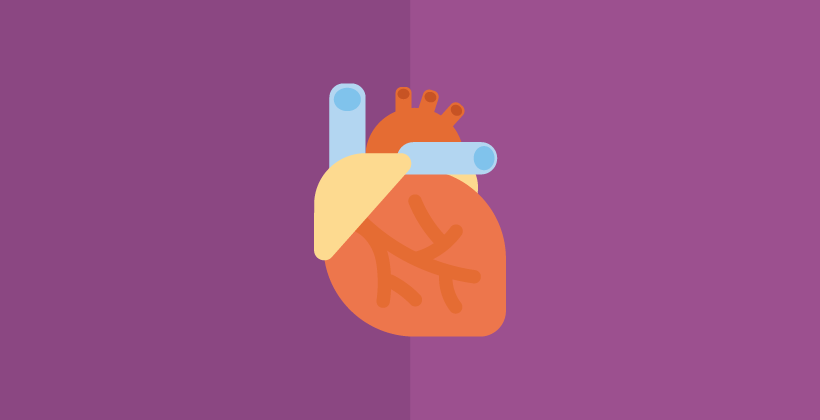The truth about “clean eating”
Last Updated : 10 August 2018
The clean-eating movement has been a popular dieting trend for quite some time now. Although not clearly defined, it generally promotes eating more whole foods, fruit and vegetables, unrefined and unprocessed food. Sounds good right? Whilst it’s great that this diet promotes eating more fruit and vegetables, upon closer inspection it’s clear that clean-eating isn’t always as healthy as it seems. This diet strategy heavily revolves around restrictive eating patterns and the exclusion of foods that are seen as ‘unhealthy’, ‘impure’, or ‘dirty’, such as sugar, dairy, or foods containing gluten.1 The concept characterises food into groups of ‘good’ and ‘bad’ and creates this idea that food is something that should inflict feelings of guilt. These perceptions are frequently reinforced by media headlines describing foods or ingredients with emotive language (e.g. superfood, toxic etc.).
Clean-eating diets can often contradict national guidelines for a healthy diet. The omission of certain food groups such as carbohydrates and proteins can have adverse health consequences. For example, avoiding gluten-containing foods or cutting out carbohydrates may lead to low whole grain consumption, which is associated with increased risk of gut cancer, obesity, cardiovascular disease and type 2 diabetes.2 Eliminating dairy products without planning for adequate plant-based substitutes could lead to insufficient calcium intake, which can negatively impact bone health.3 There is no need to exclude any foods from our diet, unless you have been medically advised to do so, for example to manage an allergy or intolerance. This dietary strategy can also create a negative relationship with food, which in extreme cases can cause eating disorders such as orthorexia nervosa; an unhealthy obsession with eating healthily, in which individuals often restrict their diet to a limited number of foods that they believe are “pure” and “clean”. This behaviour, which is becoming more common and increasingly recognised in recent years, has been shown to impair health, work and social functioning.4
Are processed foods bad for our health?
Processed foods are also heavily criticised by advocates of the clean-eating movement. Whilst we should aim to eat less refined and processed foods high in fat, salt and sugar, not all processed foods are created equal.5 Processing is any method applied to fresh foods to turn them into food products.6 This can involve one or a combination of the following: washing, chopping, pasteurising, freezing, fermenting, packaging, fortification, use of additives and many more.7 While fresh foods undoubtedly have a big role to play in a healthy diet, trends such as the clean-eating movement tend to underestimate the benefits that food processing can provide in terms of food safety and availability. For example, tinned vegetables stay safe to eat for years, and are a convenient and affordable way to add vegetables to your diet.
In particular, so-called ‘ultra-processed foods’ have been a topic of much speculation in the media this year.8,9 But what constitutes an ultra-processed food? Typically, it is when food is industrially produced and contains 5 or more ingredients e.g. carbonated drinks, ice cream, mass produced bread, infant formulas, ready to heat products e.g. pizzas.10 Recent scientific research led to sensationalised headlines claiming that processed foods were linked to a higher cancer risk and were the main cause of the rising obesity problem. However, the associations identified by these observational studies cannot prove that eating ultra-processed foods cause obesity or cancer. They are merely a suggestion that there may be some underlying factors linking ultra-processed foods with these health conditions, and the nature of this link remains to be identified through further research.
The bottom line: foods provide different nutrients and variety is key
Public health advice hasn’t changed; keep active, eat a balanced and varied diet including plenty of fruit and vegetables, and limit intake of red and processed meat, energy dense foods and alcohol. Nonetheless, with such dramatic headlines, it’s no surprise that many of us have been left a little confused on the effect of certain foods on our health!
When it comes to clean-eating diets and the topic of processed food, keep in mind that no one food is inherently good or bad! No individual food is nutritionally whole, but it is the combination of foods that make up our overall diet that matters most. So, let’s forget this clean-eating fad and rather than fearing foods, aim for an inclusive eating style that incorporates lots of fruits and vegetables, whole grains, and unsaturated fats, regardless of if they’re processed or in their whole form.
References
- Koven NS & Abry AW (2015) The clinical basis of orthorexia nervosa: emerging perspectives. Neuropsychiatr Dis Treat. 11:385–394.
- Nevin, SM & Vartanian, LR (2017) The stigma of clean dieting and orthorexia nervosa. Journal of Eating Disorders, 5(37) doi: 10.1186/s40337-017-0168-9.
- Craig WJ (2009) Health effects of vegan diets. The American Journal of Clinical Nutrition, 89(5), 1627S-1633S.
- Tremelling, K, et al. (2017) Orthorexia Nervosa and Eating Disorder Symptoms in Registered Dietitian Nutritionists in the United States. Journal of the Academy of Nutrition and Dietetics, 117(10), 1612-1617.
- Weaver C, et al. (2014) Processed food: contributions to nutrition. The American Journal of Clinical Nutrition (AJCN), 99(6), 1525-1542.
- Monteiro C, et al. (2010) A new classification of foods based on the extent and purpose of their processing. Cad Saude Publica, 26(11), 2039-2049.
- Floros J, et al. (2010). Feeding the world today and tomorrow: the importance of food science and technology. Comprehensive Reviews in Food Science and Food Safety, 9(5), 572–599
- The British Medical Journal (BMJ, 2018) Consumption of ultra-processed foods and cancer risk: results from NutriNet-Santé prospective cohort
- Monteiro, C, et al. (2018) Household availability of ultra-processed foods and obesity in nineteen European countries. Public Health Nutrition, 21(1), 18-26.
- Monteiro, C, et al. (2016) NOVA. The star shines bright. World Nutrition, 7(1-3), 28-38.

